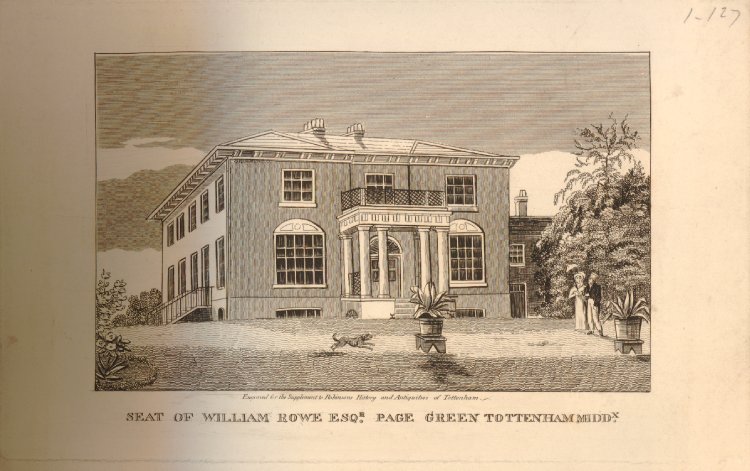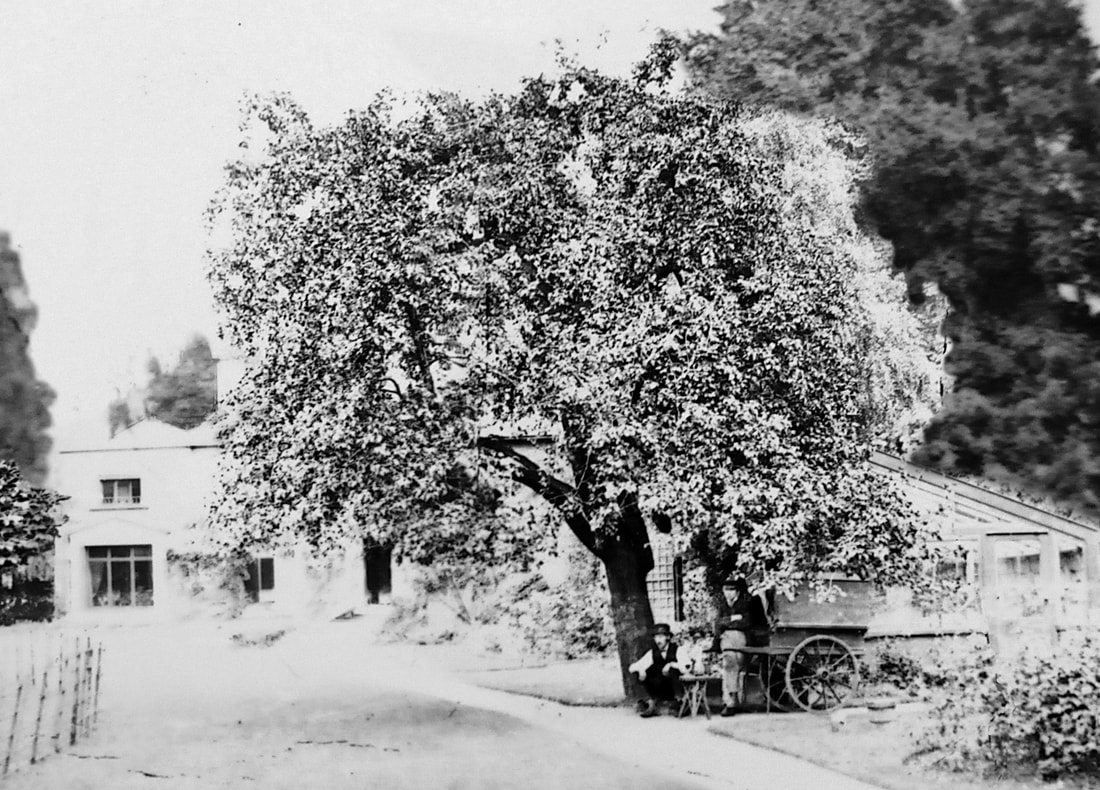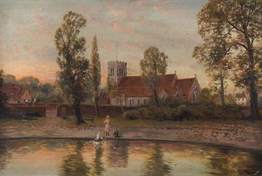Tottenham
Tottenham and its vicinage are embellished with many handsome mansions and villas, interspersed with gardens, and numerous families of opulence are residents. The village is lighted with gas, and well watered by several fountains produced by boring; a stream, once the river Moselle, passes through the parish, and empties itself into the river Lea. |
Gadsdens: home of B.G. Windus
|
Gadsdens, the house of BG Windus, had a beautiful uninterrupted view of Highgate Hill with a tall church spire in the distance. It was said that if visitors tired of looking at the exquisite artwork in the Library they had simply to look out of the window to enjoy the landscape. In BG Windus’s lifetime Tottenham was a semi-rural upper middle class area with farms, nurseries and smallholdings dotted across the landscape.
Tottenham changed with the arrival of the railways in 1870s, with affordable fares for workers, and cheap housing. After his death the property of BG Windus was purchased by the Great Eastern Railway Company, the line passing across the garden, through a cutting. In 1878 the house was levelled and a number of small dwellings were erected. These have now gone. |
Other buildings of particular importance to the Windus family were All Hallows and Holy Trinity.
All Hallows
The Anglican church which is one of the oldest
buildings in Tottenham |
Holy Trinity
The second Anglican church to be built in Tottenham
consecrated on 26 May 1830. |
Behind Sacred Doors: 700 years of Art, Crafts & Architecture from Haringey churches, an exhibition displaying rarely seen items created through the devotion of artists, crafts-people and local patronage, was held at Bruce Castle in 2015. A film of the churches featured in the exhibition, narrated by Francis Udebhulu can be seen here Behind Sacred Doors.




